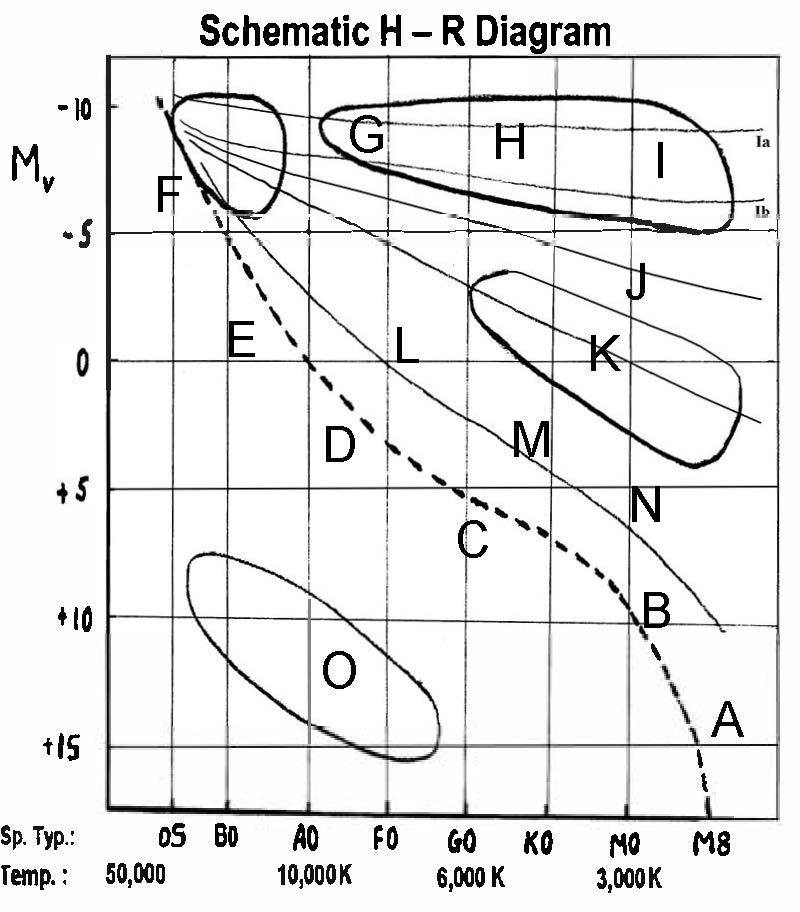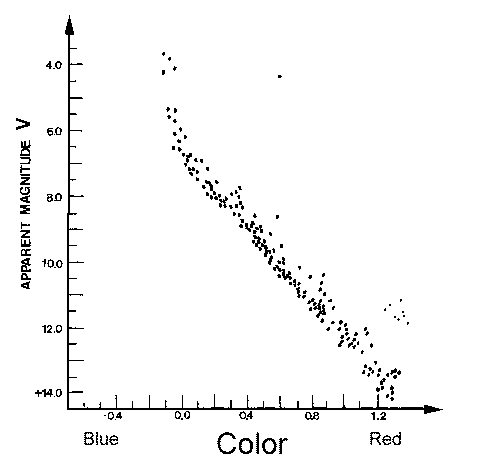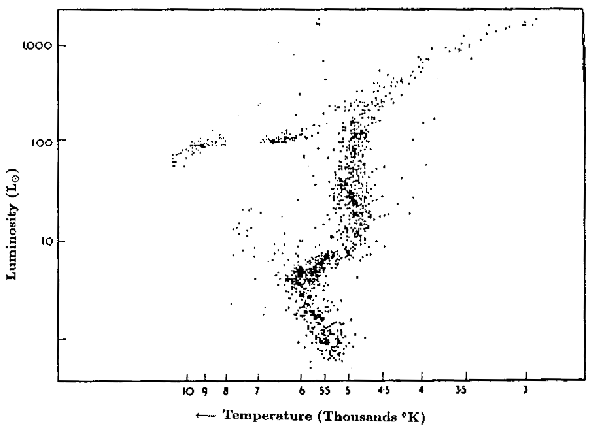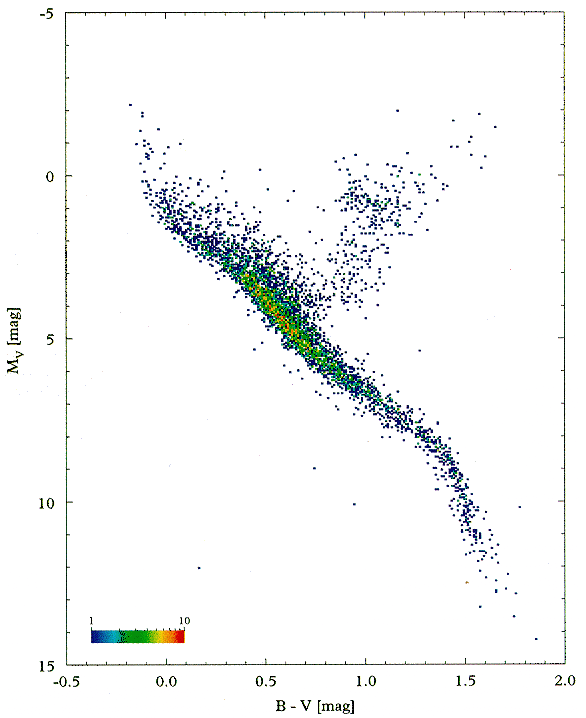The problems in this homework are mostly related to the H-R Diagram and what it tells us about our models for how stars a created, live, and die.
H-R Diagram Blank:

1: Which part of the H-R diagram is called the Main Sequence? Why is it called this?
2: Where would you expect to find our Sun on the HR diagram?
3: Where would you expect to find a star that is much smaller than our Sun? What color do you expect this star to be?
4: Where do you expect to find hot blue stars on the diagram? Do you expect them to be less or more massive than our Sun?
5: If you are comparing a star located at E with a star located at B which do you expect to live longer? Explain your reasoning.
6: A protostar is what we call a star in it's embryonic stage (hasn't lit up yet). Where would you expect a protostar for a heavy star to first be observed on the H-R diagram? Why?
7: Do all stars die by supernova? Which stars are most likely to suffer this fate? Is our sun one of them?
8: Show to track of our sun on the H-R diagram from just before 'birth' to its ultimate form -- data for this in on the breadcrumbs. Can you find information on the web about how long the sun is expected to spend along different portions of this path?
Here are 3 H-R Diagrams for different groups of stars (I, II, III):
 |
 |
 |
9: Which do you think is the youngest cluster of stars and which is the oldest? Explain your reasoning.
10: The process of nuclear fusion of hydrogen (H) only produces He (helium) as an end product. Nuclear fusion of He (helium) will occur late in the life cycle of the sun to produce Carbon, Nitrogen, and Oxygen (CNO). If we are right about this process what does it mean that we see some C,N, and O in our sun at this stage of it's life?
11: We believe, as we will discuss in coming weeks, that in the begining of the universe there was only hydrogen from which all the first stars were formed. That would mean the first stars were formed only of hydrogen and the products of hydrogen fusion. Does it seem likely or plausible that there were any earthlike planets around these first stars? Explain your reasoning.
12: To the best of our understanding no star has a fusion process during it's lifetime that produces any element heavier than iron (Fe) except during a supernova. What does this say about the origin of the materials from which the earth is made? Would this be possible if massive blue stars on the H-R diagram had lifetimes of 10 billion years? Explain your reasoning.
